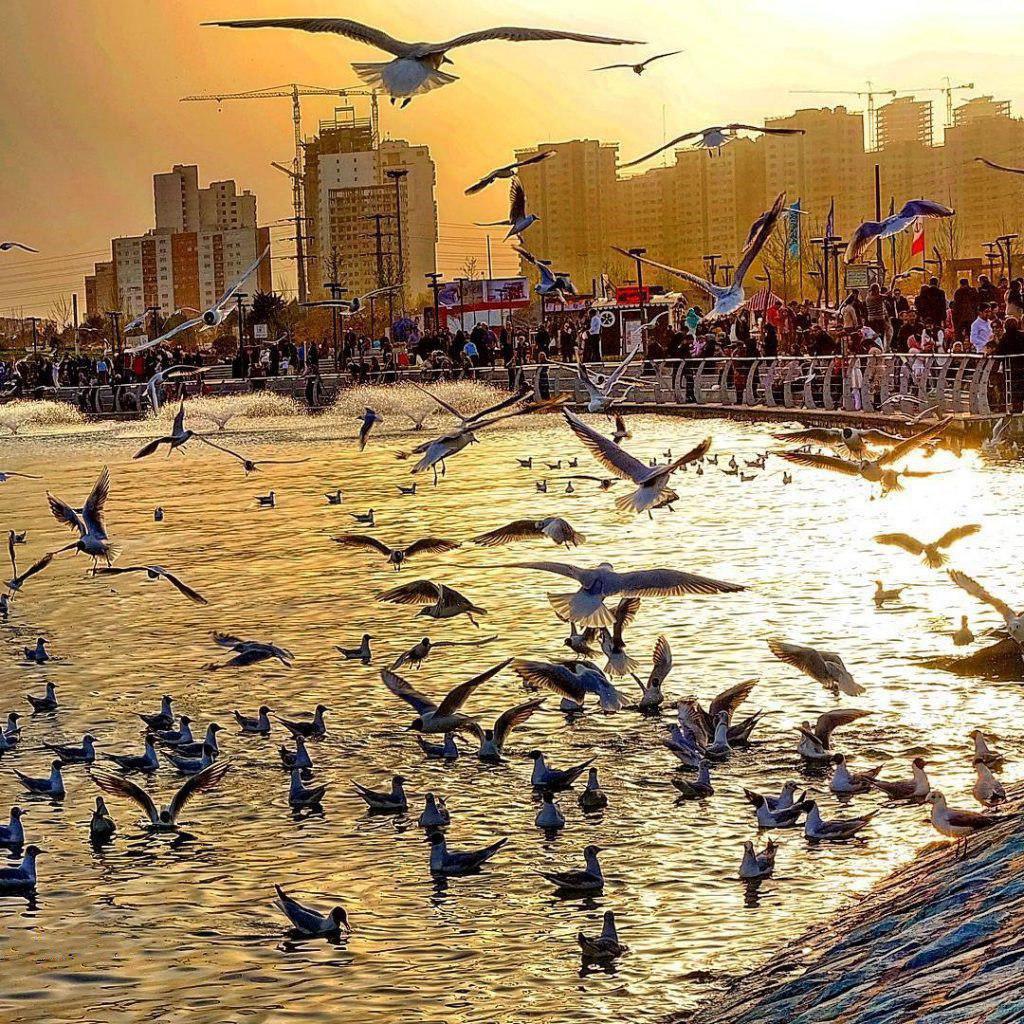Officials continue to adopt the same stopgap solutions such as school closure or traffic restrictions to alleviate the capital's air quality without any success.
However, an urban design expert has proposed a solution that calls for making alterations in urban elements to open up wind passageways to allow the smog to blow away, ISNA reported.
Tehran has experienced more than 80 days of polluted air since the beginning of the current Iranian year (March 21, 2017) and the authorities are now clinging to the hope that the Clean Air Act will be a breath of fresh air once it is fully implemented.
The law was approved last July and notified to all organizations, but it has not become operational yet because the detailed regulations must be prepared and approved by the Cabinet.
In a study conducted at the Architecture and Urban Design Faculty of Tehran University years ago, Hussein Bahreini, urban design professor, and his team demonstrated that an urban heat island (or thermal island) is among causes entrapping pollutants in the city, as they affect wind currents.
"At that time, we identified three thermal islands in Tehran in the city center (District 12), Mehrabad Airport and the northern districts where there are tall buildings with stone and metal facades," he said.
UHI is an urban or metropolitan area that is significantly warmer than its surrounding areas due to human activities.
According to Bahreini, the UHIs cause low-level winds to go higher without being able to carry the pollutants away and preventing the formation of thermal islands will help wind blow in its natural direction.
"We proved the theory by satellite images and later, university students continued the studies to find out that UHIs have multiplied across Tehran," he said.
The expert added that Tehran's geographical conditions have added to its pollution woes, since it is surrounded by mountains on three sides as if it is "at the bottom of a bowl".
"Our experiments showed that a big water body in the east of Tehran can create a temperature difference between east and west, leads to the movement of air and prevents the accumulation of pollutants," he said.
Bahreini did not mention the year of the study but confirmed that the results were presented to Tehran Municipality and the Department of Environment.
This is while an artificial lake has been built in the western end of Tehran in contrast with the proposition that Bahreini insists has been proven through computer models.
The expert pointed to the German city of Stuttgart that suffered worse conditions than Tehran.
"German officials changed the urban plan to open up passageways from the city center toward the mountains and the method ameliorated the air quality," he said.
"In Tehran, too, passages between the urban zone and mountains must be unblocked [to allow natural ventilation]. This is the most natural, cost-effective and sustainable method at present."
Bahreini regretted that constructions in Tehran violate this principle and practically form a wall that blocks the flow of air.
"Many ongoing projects have negative impacts on UHIs and wind currents. It might seem ironical but the best spot for living in Tehran is Behesht-e Zahra [the city's largest cemetery] because it has cleaner air," he said.
An article in the Clean Air Act requires the Ministry of Roads and Urban Development to conduct environmental and health studies based on the standards of DOE and the Health Ministry before embarking on a project.
The expert, however, believes that the article is too "general, ambiguous and impractical" to be effective. "It is also too costly," he added.
Measures must be taken to curb Tehran's pollution such as improving fuel and quality and vehicles' standards, but the expert believes that "if we seek to adopt effective approaches in the short run, the best way is to enable ventilation".
Bahreini stressed that controlling thermal islands (for instance by creating green spaces next to high-rise buildings instead of asphalt) and building a lake in eastern Tehran are the best possible solutions at present.
"After a five-year study, we introduced the indices for Tehran's sustainable urban development but the two-volume book is currently gathering dust in my bookcase," he said, hoping that the studies could still be used by Tehran Municipality, city council, governorate and the Roads Ministry.


